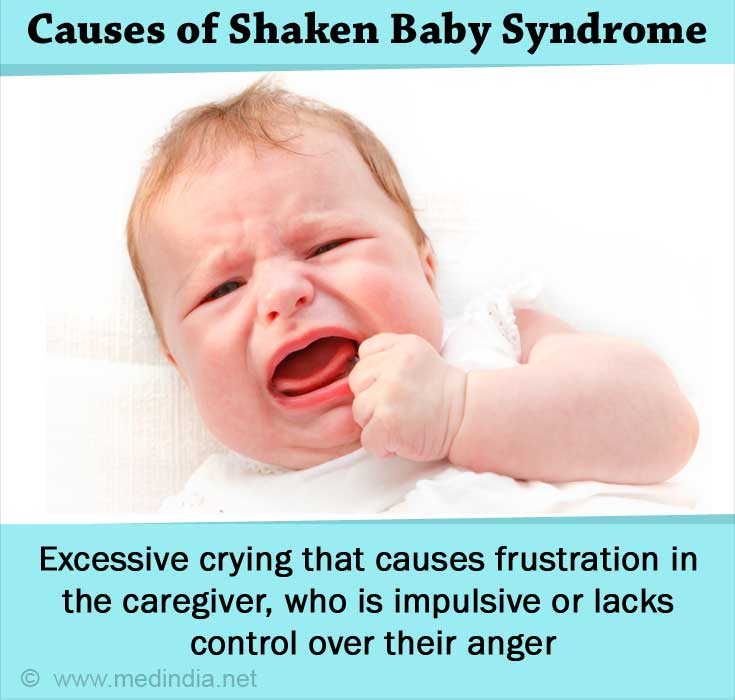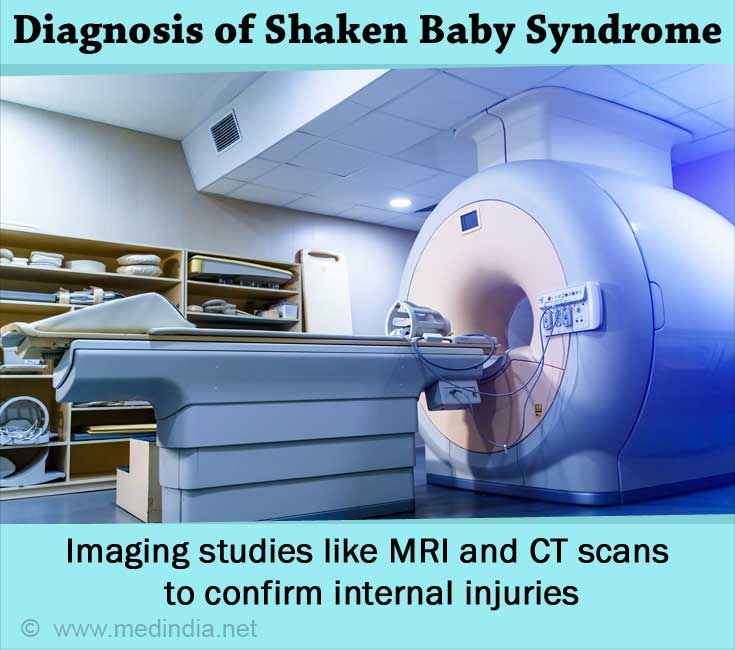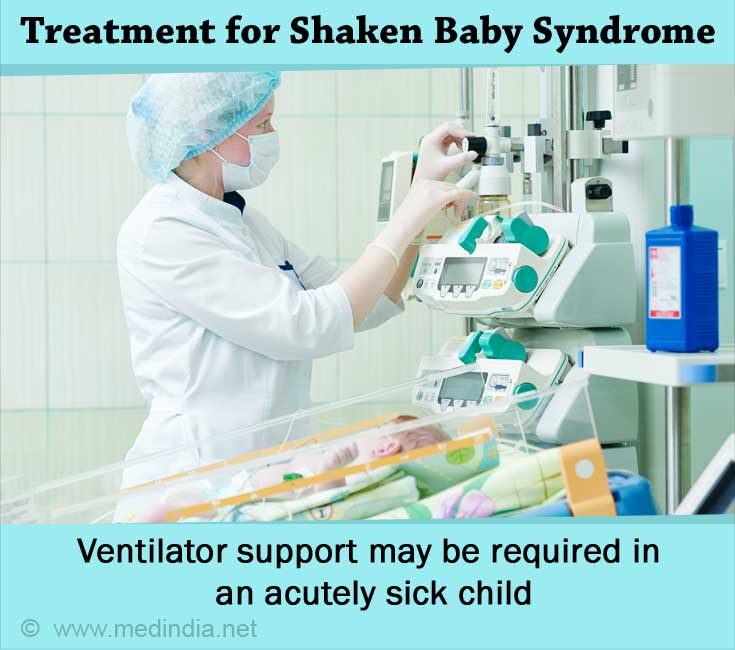What is Shaken Baby Syndrome?
Shaken baby syndrome is a type of traumatic brain injury in babies or toddlers due to abuse; it is included under abusive head trauma (AHT) and inflicted traumatic brain injury (ITBI). The other cause of abusive head trauma in babies is due to hitting the head on a blunt surface, which may or may not be following the episode of shaking of the baby.
In shaken baby syndrome, the injuries result from violent shaking of the baby. The brain moves to and fro within the skull, hitting the bone as it does so. The weak neck of the baby is unable to contribute any support to the large head. This results in severe head trauma and bleeding that accumulates between the skull and the brain (subdural hematoma), or sometimes even brain trauma. The eyes are also commonly affected with bleeds within the inner layer of the eye called retinal hemorrhages.
The condition is usually seen in children below the age of 2 years, but may even be present in children up to the age of 5 years. Boys are more commonly the victims of shaken baby syndrome. The abuser is often a male member of the household which may include the child’s father or the mother’s partner. Female babysitters may also be responsible, and in rare cases, even the mother could hurt her baby fatally.
The problem of shaken baby syndrome arises not due to any health issues in the child, but due to the response of the adult taking care of the child, who may not be prepared enough to handle a newborn. Thus, any effort to prevent the condition should be directed towards those in direct contact with the child and not the child herself.
Causes of Shaken Baby Syndrome
Shaken baby syndrome is a condition following repeated violent shaking of the baby. The father or the mother’s partner is commonly responsible. Some of the causes include:
- Excessive crying that causes frustration in the caregiver who may be tired, impulsive or lack control over his / her anger

- Social factors in the family which include:
- Low socioeconomic status
- Lack of support from extended family
- Unstable family
- Parental issues which include:
- Being parents at a very young age
- Abuse or neglect experienced by the parents during childhood
- Depression
- Higher expectations from the child
Signs and Symptoms of Shaken Baby Syndrome
Since the person responsible for the violence to the baby is often an intimate caregiver, it is quite unlikely that the baby will be brought with a history of trauma. Therefore, some level of suspicion is warranted in a baby with traumatic injuries. Some of the symptoms that may be present include:
- Extreme irritability
- Lethargy
- Vomiting
- Problems with feeding or breathing
- Seizures
- Pale or bluish skin
- Unresponsiveness or unconsciousness
The following may be revealed on examination:
- Damage to the neck and spinal cord
- Enlargement of the head due to an increase in pressure within the head
- Bruises all over the body
- Fractures of ribs and other bone; skull fractures are commonly present
- The injuries are at different stages of healing, indicative of repeated injuries to the child
The effects of shaken baby syndrome are not only immediate; if the baby survives, there can be some serious complications in the long term that can interfere with the normal life of the child. Complications of shaken baby syndrome include:
- Mental retardation or developmental delays

- Neurological problems like cerebral palsy, paralysis and seizures
- Blindness due to retinal bleeds
- Death due to injuries, which occurs in one child among every four children affected by the condition
Diagnosis of Shaken Baby Syndrome
Diagnosis of shaken baby syndrome is based on:
- History of the caregiver, which may not always be reliable
- Physical examination that may indicate signs of injury
- Detailed eye examination to check for retinal bleeds
- Imaging studies like MRI and CT scan to identify internal injuries. The nature of injuries is clearly due to violence and not due to any other cause despite the caregiver’s likely insistence regarding the same. X-rays are useful in diagnosing bony injuries

Treatment for Shaken Baby Syndrome
Treatment for shaken baby syndrome depends on the extent of the damage. The child may require emergency treatment in an intensive care unit. If the doctor suspects the condition, he should alert local authorities as soon as possible. Treatment depends on the nature of the injury:
- Ventilator support may be required in an acutely sick child
- Accumulation of blood in the brain may require surgical treatment
- Seizures require treatment with appropriate antiseizure medication(s)
- Fractured bones may need immobilization
Prevention of Shaken Baby Syndrome
The person responsible for shaken baby syndrome is not the child who cries excessively, but the caregiver of the baby. Thus, preventive strategies should be directed to the caregivers and not the baby. Some of the suggested approaches to prevent this condition are:
- Conducting individual based and community based programs to prevent this horrendous action
- Counselling adolescents about the condition and how to avoid it
- Instructing new parents of what to expect from the baby and advising measures to cope up with the new life in their household

- Counselling caregivers, especially those who are likely to have less patience with a crying baby
- Increasing awareness that even shaking a baby can result in fatal consequences
- Increasing awareness that injuring the baby is a crime and a punishable offence






